Considerations to improve aquaculture operations and production during extreme climate events
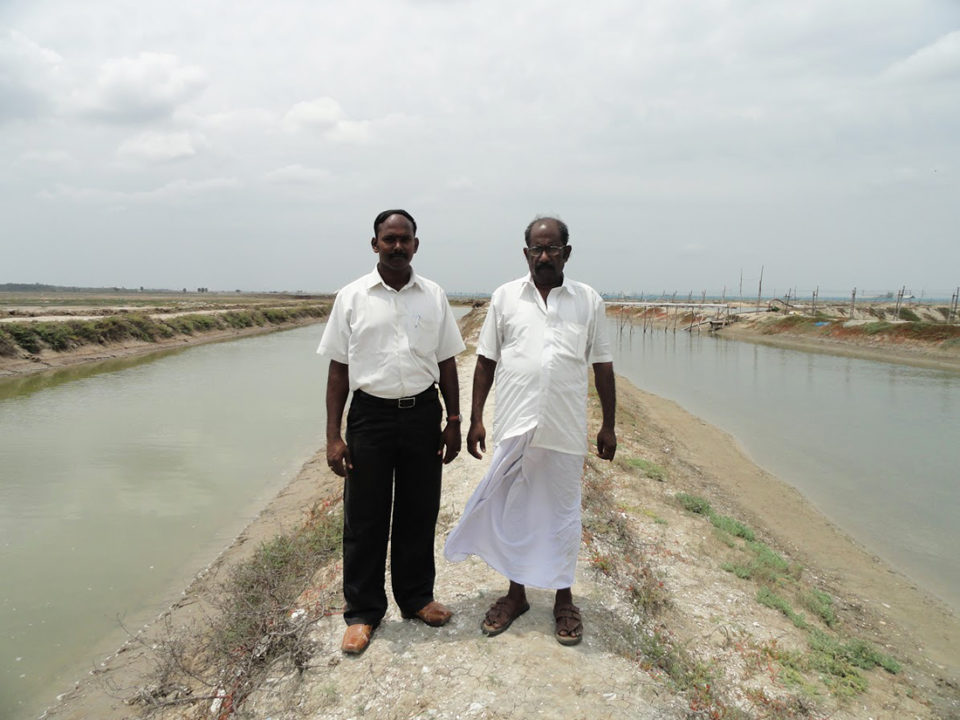
Aquaculture, one of the fastest growing food-producing sectors that habitually develops in unutilized coastal areas, can face significant risks due to extreme weather events. Changing climates can increase the intensity and frequency of extreme weather events like cyclones and floods, and many coastal regions where shrimp farming takes place are often the worst affected.
Brackishwater aquaculture, a rapidly growing sector in India, is synonymous with shrimp farming and has become a significant activity to enhance food production and revenue generation, providing employment opportunities and nutritional security. Generally, shrimp are grown in earthen ponds located in the coastal areas, but farms are often damaged or inundated due to heavy rains accompanied by floods and cyclones. The heavy, gusty winds associated with cyclones can cause flooding, infrastructure damage, breach of levees and erosion, loss of stock, and lead to major or complete economic loss, and can cause substantial dislocation of communities and disruption of farming system.
There are climate change predictions that indicate that Southeast Asia is expected to face more such events compared to rest of the world, and therefore more climate resilient designs and management practices will be needed to better cope up with these extreme weather events.
We recently studied the design criteria in successful farms that have effectively managed to cope with extreme climate events. Farm design modifications can help prevent farm flooding and reduce the risk of stock losses and animal escapes from the ponds. Not incorporating local, temporal and spatial dynamics of climate extreme variability in farm design can result in crop losses during episodes of heavy rains in low-lying areas. Improved designs for shrimp farms located in flood-prone areas in India and elsewhere are needed not only to protect farm structures, but also to help prevent disease outbreaks due to possible transmission of pathogens through flood waters.
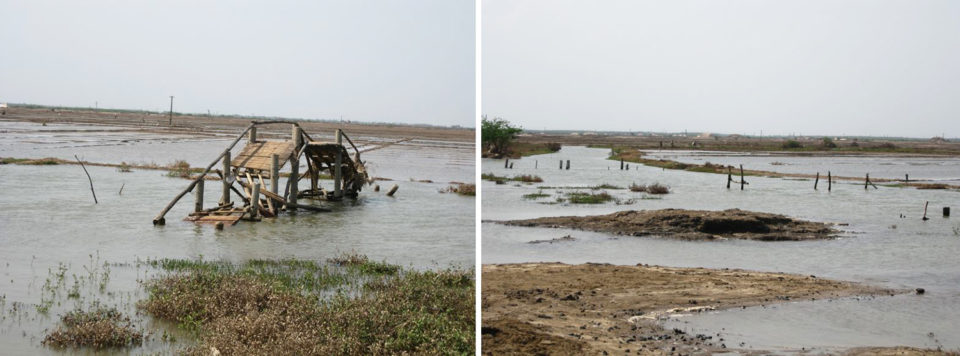
Farm design considerations
The basic design requirements for shrimp culture ponds are sites with good soil and water quality, inlet water distribution and drainage structures, good aeration and pumping systems, and biosecurity measures like crab and bird fences. Farmers perceive that floods, cyclones and heavy/torrential rain are the major three extreme events affecting aquafarmers of flood-prone, low-lying areas. The authors observed that the shrimp farms located in the flood-prone areas of southern India in the Nagapattinam District of the state of Tamil Nadu – where the majority of the producers are small farmers – built their farm ponds with only the basic requirements for farming but without consideration on the rising climatic variability.
In this area, many farm sites are located at an elevation of only 1 meter or less above mean sea level. Pond sizes vary from 0.5 to 1.1 hectares, with a depth of 0.9 to 1.4 meters. During periodic flooding, very few farmers in these low-lying areas are able to save their crops, and this is the prevailing scenario for most of small farmers of the country.
Jayanthi, Farm design, Table 1
| Farm Design Criteria | Requirement |
|---|---|
| Main Levee: | |
| Top width (m) | 2 to 2.5 m |
| Slope | 2:1 |
| Free board (cm) | 60 cm |
| Partition Levee: | |
| Top width (m) | 1 to 1.5 m |
| Slope | 2:1 |
| Free board (cm) | 30 cm |
| Pond bottom slope | 1000:1 to 1000:5 |
Proper farm design with strong levees on the periphery can reduce the potential long-term problems in flood-prone areas, but most of the existing aquafarms in the area did not have designs to prevent flooding. The integration of farm water recirculation and reservoirs into a farm’s design helps protects it from the adverse impacts of flooding, and very significantly reduces the need on external water sources for water exchange. The farm recirculation canal around the ponds with an elevation below the ground level helps to hold the water for production, and holds water during heavy rains.
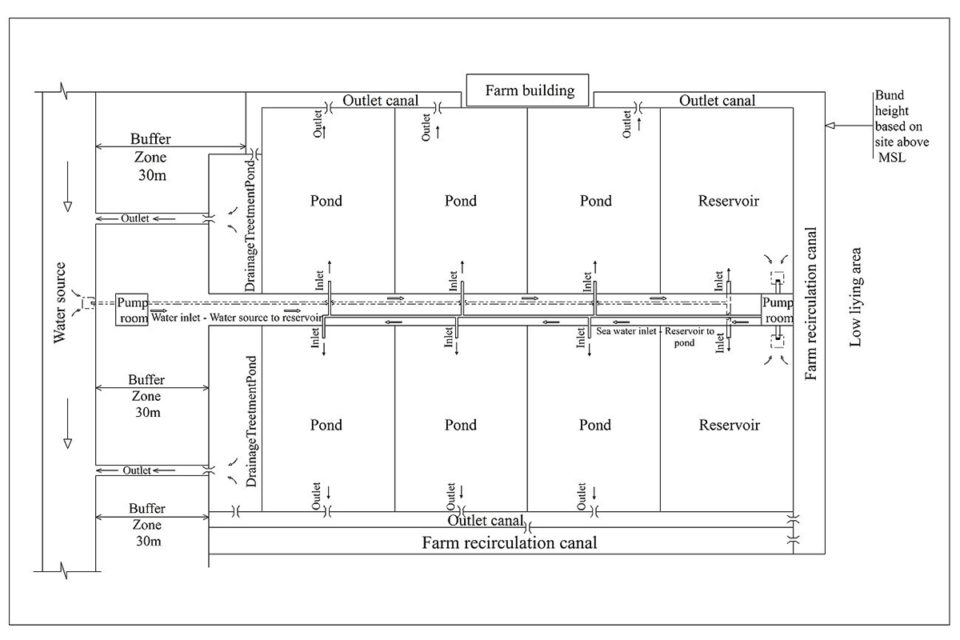
The height of the outer embankment of a farm’s recirculation canal should be designed based on the site elevation above mean sea level, and considering past records of flood frequency and intensity, and inundations that have occurred in the particular area. The height of the levee should be increased on the side of open, exposed vulnerable area. The optimum water depth requirement in culture ponds of the predominant Pacific white shrimp (Litopenaeus vannamei) is 1.2 to 1.4 meters, because it is a water column-dwelling species and increasing the pond water depth supports increasing stocking densities and higher production per unit area. Also, a central drainage system in the ponds helps with removal of sludge from the pond bottoms.
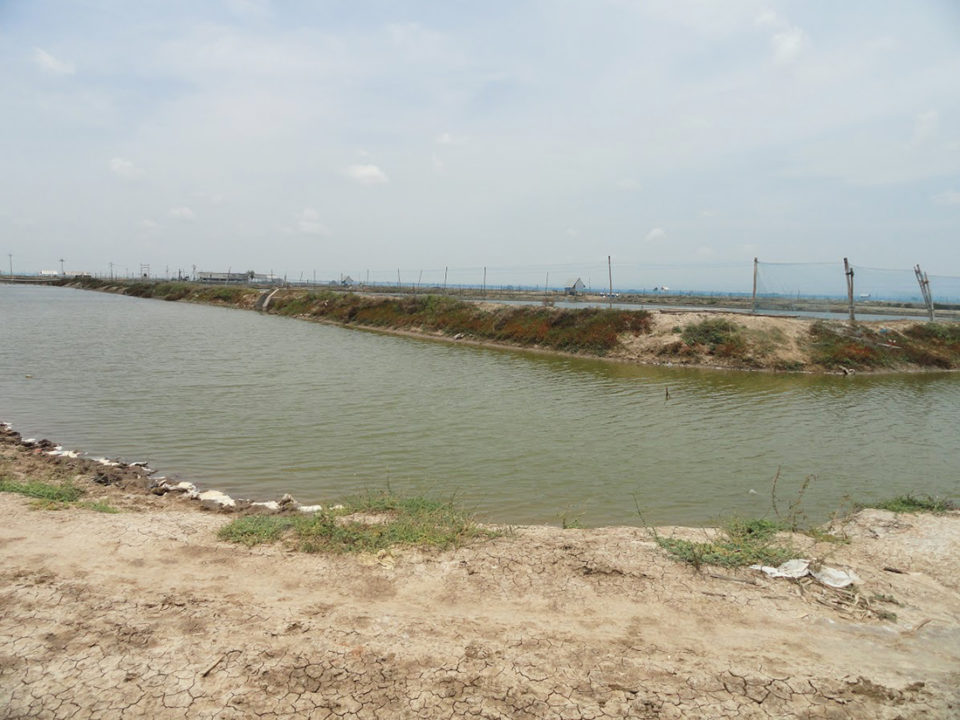
Most of the L. vannamei farms are operated using zero water exchange, with internal farm reservoirs providing additional water requirement during the culture period. Outer recirculation canals around the farm in low-lying areas should have a height of at least 1.8 meters above mean sea level, to help prevent overflowing water and to protect the levees during cyclones and flooding events. But this height should ultimately be based on the site elevation above mean sea level, local frequency of extreme events, and tidal amplitude.
Reservoir ponds have gained momentum because of its importance to L. vannamei culture, and recirculation canals can help farms better face climate change events. Around 40 percent of the total water volume in a farm water should be in the reservoirs, recirculation canals and sedimentation ponds.
Source water pumped to the reservoir should be treated with chlorine and then dechlorinated before being distributed to culture ponds. Recirculation canals are typically 60 to 90 cm in depth and are connected to the outer canals and reservoir ponds. The layout of the farms with recirculation canals is more suitable for low-lying areas.
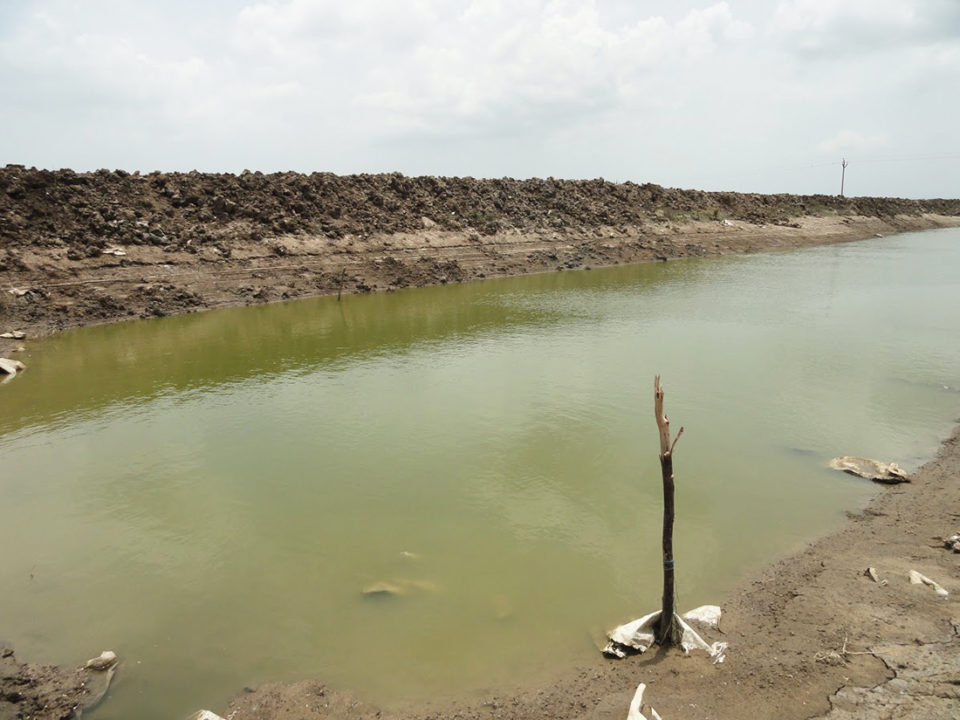
The authors observed that the farms with recirculation canals have been able to effectively manage floods and protect their shrimp crops. The size of these canal depends on the size of the farm, and generally one canal is sufficient to connect four ponds 0.5 to 0.8 hectares each with adequate water flow management.
Aeration of shrimp ponds is increasingly becoming an essential requirement for intensive culture operations to maintain the required dissolved oxygen levels. Shrimp farmers use different types of aerators with various designs, which create a radial or elliptical water flow pattern with rapid water flow in the periphery and stagnant conditions in the center of the ponds. Aerator placement must provide adequate aeration while minimizing pond bottom and levee erosion.
Perspectives
Most aquafarmers can efficiently manage extreme climate events to some extent, by modifying their farm designs and incorporating management measures to increase their operations’ resiliency. Many improvements to adapt to changing climate conditions could be achieved by incorporating the lessons from the history of climate extremes into the management needs and farm design.
Modified and scientific farm design increases its resiliency, better protects it from extreme events like heavy rains, prevents flooding, helps safeguards the farm from disease outbreaks, supports farm operations independent of the outside environment, helps to cope up with climate variability, reduces the maintenance cost and supports maintaining good water quality.
Design improvements that can help to better face climate variability include construction of recirculation canals in addition to the main reservoir, sedimentation basins to remove suspended solids and silts, especially-designed periphery levees, community-based activities and other measures. Greater effort should be devoted to developing better farm designs and community-based strategies for managing extreme weather events.
Authors
-
Dr. M. Jayanthi
Principal Scientist
ICAR-Central Institute of Brackishwater Aquaculture, Chennai, India -
Dr. M. Muralidhar
Principal Scientist
ICAR-Central Institute of Brackishwater Aquaculture, Chennai, India
-
Dr. M. Kumaran
Principal Scientist
ICAR-Central Institute of Brackishwater Aquaculture, Chennai, India -
Dr. K.K. Vijayan
Director
ICAR-Central Institute of Brackishwater Aquaculture, Chennai, India
Tagged With
Related Posts

Intelligence
India a unique opportunity for rainbow trout farming
India has a small trout farming industry in the Himalayan and Southern Peninsula areas. Even though current annual production is only a few hundred tons, the country has many areas that, although geographically difficult to work in, also offer excellent, very large habitats and conditions for trout culture.

Responsibility
India’s reservoirs show significant potential for aquaculture
Reservoirs cover about 3 million hectares of surface area in India, and are a growing resource with enormous potential for increasing their fisheries and extensive aquaculture yield, as well as a source of increased employment.

Intelligence
GOAL 2017: Global shrimp production review and forecast
The GOAL 2017 production survey for global shrimp farming production showed a minor recovery for 2016, with production expected to strengthen through 2019, when global farmed production should reach 4.82 million metric tons (MMT), barring major shrimp disease issues.

Innovation & Investment
Investing in Africa’s aquaculture future, part 1
What is the future that Africa wants? Views on how to grow aquaculture on the continent vary widely, but no one disputes the notion that food security, food safety, income generation and job creation all stand to benefit.


